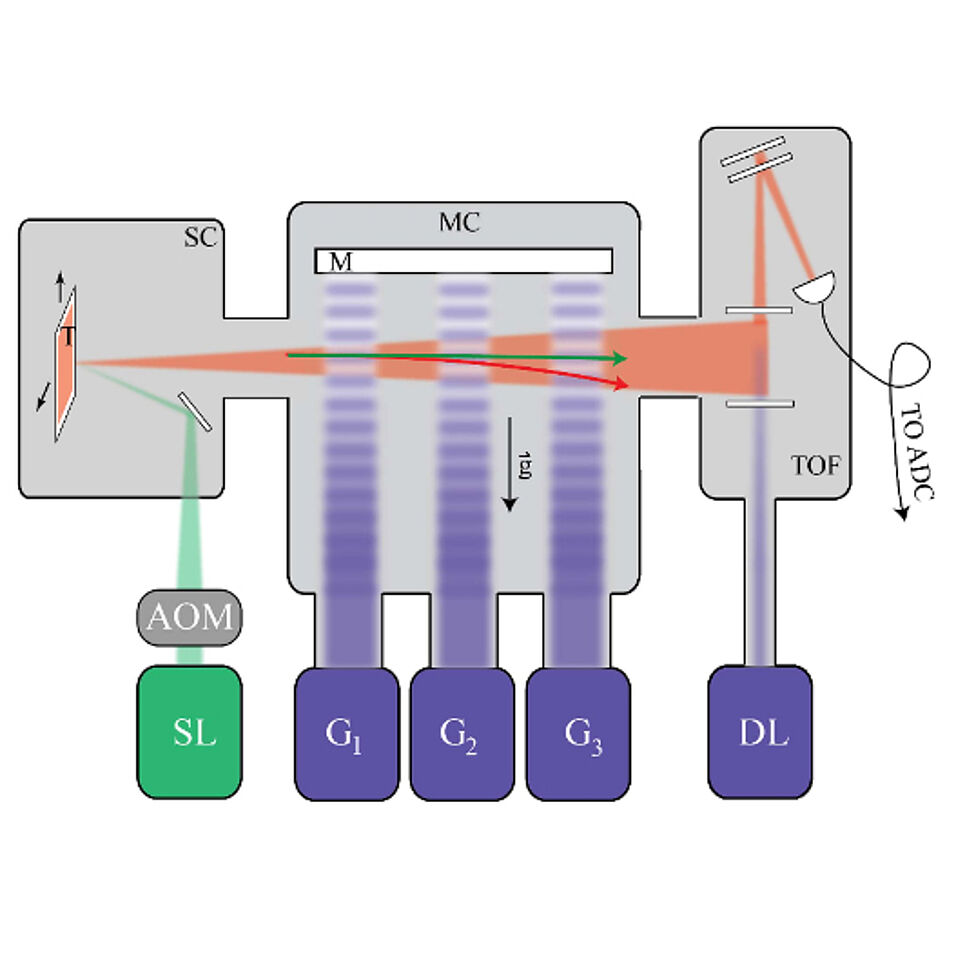Interferometry in the time domain has proven valuable for matter-wave based measurements. This concept has recently been generalized to cold molecular clusters using short-pulse standing light waves which realized photo-depletion gratings, arranged in a time-domain Talbot–Lau interferometer (OTIMA). Here we extend this idea further to large organic molecules and demonstrate a new scheme to scan the emerging molecular interferogram in position space. The capability of analyzing different isotopes of the same monomer under identical conditions opens perspectives for studying the interference fringe shift as a function of time in gravitational free fall. The universality of OTIMA interferometry allows one to handle a large variety of particles. In our present work, quasi-continuous laser evaporation allows transferring fragile organic molecules into the gas phase, covering more than an order of magnitude in mass between 614 amu and 6509 amu, i.e. 300% more massive than in previous OTIMA experiments. For all masses, we find about 30% fringe visibility.
Read more: here.

